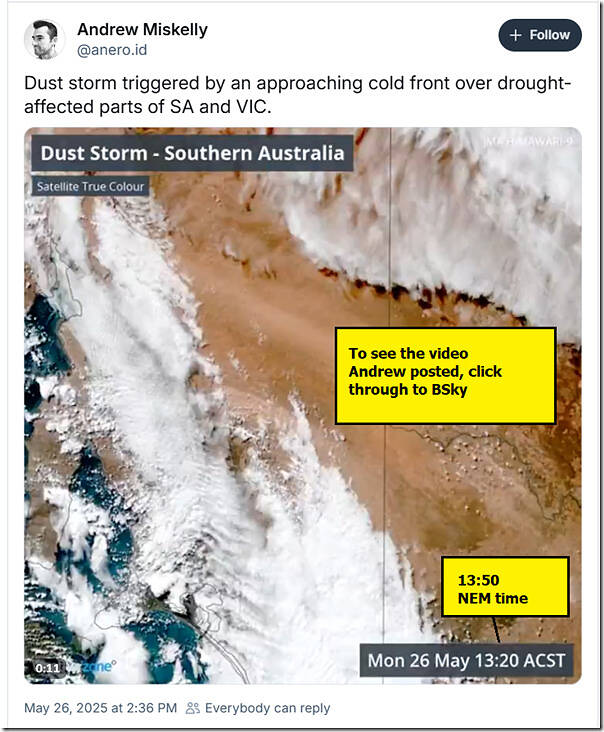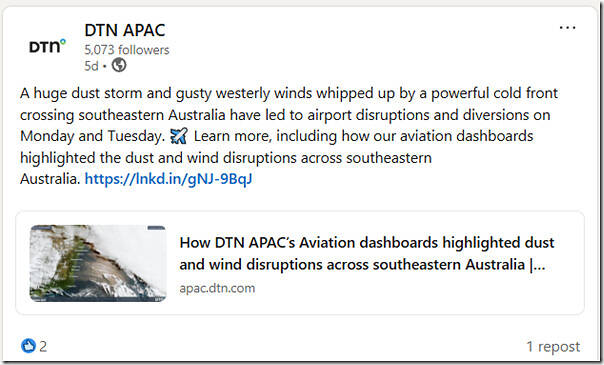Monday 26th May 2025 was a noteworthy day for a number of reasons, including:
1) There were specific conditions occurring throughout the day:
(a) Through the day as already noted here in an earlier article, it was heavy wind production across all wind farms across the NEM
… peaking at a new all-time maximum (9,287MW as FinalMW for the 21:35 dispatch interval NEM time on Monday 26th May 2025).
(b) Also as noted in an earlier article, there were many Dispatch Intervals seeing significant Aggregate Dispatch Error across all Semi-Scheduled units of both fuel types
… i.e. both for Large Solar (which showed a yo-yo pattern through most daylight hours) and for Large Wind (which was much more consistently underperforming with respect to Target).
2) But there were also notable events at specific times in the day:
(a) As noted here in an earlier article, there were two large drops in ‘Market Demand’ in South Australia during the day:
i. A drop of 235MW as target for the 13:35 dispatch interval NEM time; and
ii. A drop of 213MW as target for the 14:50 dispatch interval NEM time.
(b) But there was also a drop in mainland NEM frequency to below the NOFB just after the end of the 16:15 dispatch interval
… with a contributor noted that ‘Poor dispatch performance of VRE (collectively) on Monday 26th May 2025 sufficiently large to drive frequency outside of NOFB’.
Also worth noting here was the dust storm that past through, which was documented in various places – including these that we saw
Andrew Miskelly’s video
First up, I’d like to highlight that Andrew Miskelly of Weatherzone published a video here on Bsky that afternoon (and from which I’ve grabbed this screenshot as at ~13:50 NEM time on the day):
Note that it’s probably the case that the heavy cloud and/or dust rolling past areas of dense rooftop PV (like Adelaide) that would have resulted in rooftop PV bouncing back upwards, and so ‘Market Demand’ dropping.
Article from DTN
Our team also noted that DTN APAC posted this update on LinkedIn:
… with the update above linking through to their article ‘How DTN APAC’s Aviation dashboards highlighted dust and wind disruptions across southeastern Australia’ published the following day by Felix Levesque that’s well worth a read.
Whilst that article speaks to the impact on aviation (e.g. visibility), it’s clearly also had an effect on power supply and demand.
We’ll come back to this later…




Leave a comment